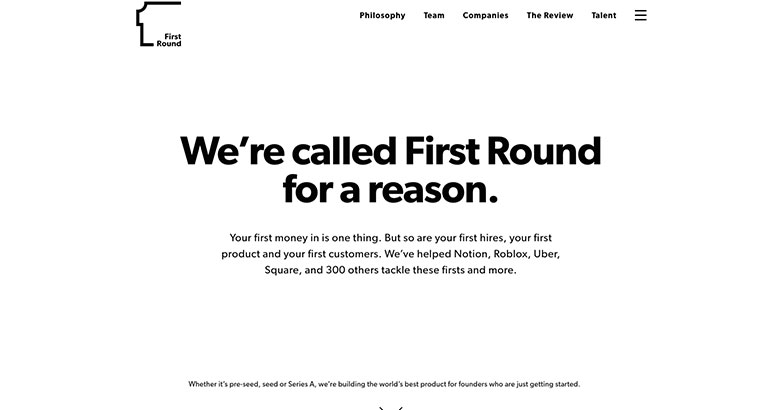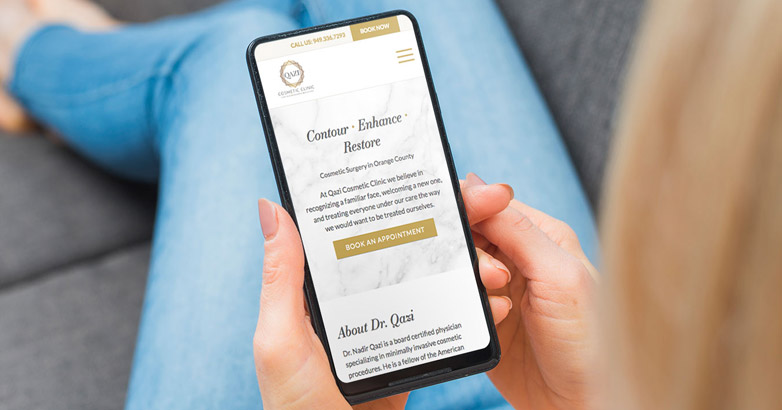Emotional branding is a powerful marketing tool that allows companies to establish emotional connections with their target audience. By evoking positive emotions and memories, such as joy, love, nostalgia, and excitement, brands are able to craft a memorable experience that creates lasting loyalty in consumers. This article will cover the fundamentals of constructing an emotional branding strategy.
Emotional branding can effectively target the subconscious desires of consumers for love, power, emotional security, and ego gratification. Companies engage in emotionally triggered marketing to tap into human emotions and create an emotional connection with their customer base. This type of marketing has proven to be highly successful as it appeals directly to a person’s natural instincts and desires.
When companies build strong emotional connections with their customers through brand development, they reap significant rewards. As an example, a large financial institution recently released a credit card that resonated particularly strongly with millennials. The result? Usage among this group jumped 70%, while the number of new accounts rose by 40%.
Emotional Branding – What Is It?
One of the core techniques used in modern marketing is emotional branding. This strategy forms a link between a product or brand and a consumer by playing on emotions. To make this connection, we craft content that resonates with customers’ needs, egos, desires, or mental states. The effectiveness of emotional branding makes it an important tool for any successful business.
Elevate Your Luxury Brand Today
Schedule Your Free Consultation
Seeking to elevate your luxury business? Let Mediaboom guide you. Secure your exclusive, free consultation with our luxury marketing experts today.
How Emotional Branding Works
Emotional branding (not marketing) evokes emotion to form a stronger relationship with consumers and companies to increase sales.
The Neuroscience Behind Emotional Branding
Neuro/emotion marketing is a tactic used to influence customers on a psychological level. This technique combines neuroscience and marketing to understand how the mind responds to advertising and brand content. Neuroscientists study the cognitive and affective responses of consumer behavior, allowing brands to gain insight into how effective their messaging strategy is.
Neuromarketing goes beyond traditional art-based branding strategies by utilizing advanced data analysis tools such as eye-tracking, facial coding, and electroencephalogram (EEG). By analyzing consumer reactions in these ways, companies can ensure that their brand messages are resonating with their target audience’s emotions.
Harvard Business Review research has confirmed that 90% of buying decisions happen subconsciously in the brain, visuals can be processed over 60,000 times faster than text, and 50% of a brand experience is driven by emotion. Neuromarketing helps businesses identify the types of marketing experiences consumers need.

How To Perfect Your Emotional Branding in 4 Steps
1. Find A Problem
Businesses must be able to appeal to a broad target audience in order to successfully reach their commercial objectives. Creating emotional connections with customers and prospects is challenging, but essential. Strategizing and implementing effective marketing techniques can help build stronger, more meaningful relationships with your audience.
Figure out what motivates your customers and make sure these are themes throughout your branding and campaigns. If you don’t yet know what triggers an emotional reaction, research your competitors on social media and explore market insights. Additionally, seek actionable feedback from your audiences through surveys or interviews in order to discover which messages strike the right chords.
2. Describe Your Feelings About It
To connect with a crowd, it’s important to consider the market and sector of your company and how your customers feel about it. By taking some time to reflect on the answers to questions such as: What can I expect from this business? What are the benefits for me if I use their services? How will working with them be of value in my life? Are they connected to any social causes that I’m personally invested in? And how will this company work better for me than others like it?
By understanding your customers on this level, you’ll be in a better position to recognize areas where there are opportunities to maximize your product and service offerings. Knowing what stirs emotion in your audience is an excellent way to create meaningful connections.
3. Create A Story Around Your Product / Service
It’s important to build emotional connections with your customers, and storytelling can be a great way to do this. When choosing which tales to tell, consider these three points:
Vulnerability – Show that your products or services came from humble beginnings, struggles you have faced as a business owner, or challenges your employees have encountered. These types of stories speak to the human experience and enable others to relate.
Relatability – Link each story back to the core of what your brand stands for and ensure it resonates with who you are as an organization. Depending on how much sadness it portrays, a sad story may work for some brands; still, it is important that there is always something positive or inspiring in every tale.
Legitimacy – Back up details in every story shared with real anecdotes from people who use or benefit from the products or services offered by your business. Sharing authentic feedback from these stories strengthens both brand equity and value in what you offer customers. Keep in mind that all stories highlighted should be connected back to your company’s purpose.
4. Prepare An Outstanding Offer To Your Customer
Here are 3 tips to get your emotionally grasped customers to move on your product:
1. Create appealing and attractive content around your product – In order to maximize the response of potential customers, you need to create a compelling offer. Drab language will not entice anyone to take action. Write something unique that stands out and encourages readers to take advantage of your product or service now instead of waiting – for example, ‘start today – why wait any longer?’
2. Produce a sense of urgency.
3. Give simple and effective CTAs (Call to Action).

The Pros Of Emotional Branding
1. Grow Your Numbers Of Customers
Exploring the power of storytelling is a great way to engage and communicate with customers. By understanding the intention behind your brand’s mission, you can create meaningful messages that stand out from the crowd. Crafting compelling stories is a great strategy for reaching new customers and growing your consumer base.
2. Establish An Emotional Connection With Clients
People often create their own personal “brand” by associating themselves with certain products or services. Whether it’s Nike, Coach, Apple, or just a “no label” approach; we all have our identifying characteristics. Personalization is key for building a connection with people.
If you want your marketing efforts to hit home with your audience, then employ an approach centered around understanding their core emotions and problems in their everyday journey. This can help build relationships and even generate a sense of belonging through your brand. Go the extra mile and get to know their story so that you may leverage this knowledge for stronger results.
Download Our FREE E-Book
10 Website Mistakes Luxury Brands Should Avoid
Does your luxury website include any of these common mistakes? Learn the secrets to driving more traffic to your luxury website, generating more leads, and ultimately increasing sales.
3. Build Client Loyalty
When you connect with your audience on a deeper level, they’ll come to value your brand more and commit to it long-term. When customers relate to the mission of your company on a personal level, they become part of something larger than themselves—which can add tremendous value to your business.
4. Enrich Your Customer’s Lifetime Value
If you successfully reach a client’s emotions then they will work with you for the longest time possible.
Customer service does not end once your products or services have been purchased. Maintaining communication with your customers after making a sale will express to them (and potential repeat customers) that you are invested in their experience even after the sale is completed.
Additionally, post-sale customer service provides an opportunity for increasing brand awareness and fostering customer loyalty over time. Remember that addressing customer concerns is only one part of expressing care; there are other activities you can do to demonstrate attention to customers whilst promoting the growth of the business.

The 5 Best Examples Of Emotional Branding
These are 5 of the best emotional branding examples.
1. Nike – Just Do It
Nike is an industry leader with a massive following and a big part of this success is attributed to their emotional branding strategy. Their ads rely heavily on engaging stories which showcase the hero’s journey, by emphasizing the idea of tackling adversity. These stories touch on a deeply relatable sentiment – namely, that one is always fighting against the “voice in your head” which says you can’t do something.
Nike encourages people to blur those boundaries and “just do it” — giving shape to an aspirational lifestyle many seek to achieve. As such, Nike sells more than just products: they are selling aspiration.
Nike Phenomenal Shot
In 2014, Nike and Google partnered to create the ‘Nike Phenomenal Shot’ during the FIFA World Cup. This innovative program allowed fans to commemorate the incredible goals scored by Nike athletes in real time with a personalized experience. Fans could take 3D shots of their favorite players, customize them with filters, captions, and stickers, and then share their ‘Phenomenal Shots’ on social media.
2. Gatorade’s Emotional Branding Film – The Boy Who Learned To Fly
Gatorade’s “The Boy Who Learned to Fly” short animation was produced in collaboration with Academy Award-winning studio Moonbot. It depicts the inspiring story of Usain Bolt’s rise from humble beginnings in Jamaica, to becoming an internationally renowned icon. The film took viewers along his remarkable journey.
“For The Love of Sport” Campaign
Gatorade’s “For the Love of Sport” campaign used revenue from special bottles to donate to 19 select sports-focused organizations. Consumers can vote online for who Gatorade will donate to in order to help athletes pursue their passion. It’s an incredible cause and a great way for Gatorade to make a difference!
3. Coca-Cola – Christmas ADs
Last holiday season, Coca-Cola was working to show stories of why their brand and Christmas share something special. According to Tom Hidvegi, Coke’s director of creative strategy, “We don’t just restate the values and benefits of Christmas; we seek to show how Coke and Christmas are connected in a meaningful way.” The campaign centers around themes of inclusivity, gifting from the heart, and watching out for others – all important focuses during a time when many feel isolated.
Coke’s 2020 holiday agenda consisted of a few noteworthy items as well. First, there was a live virtual event on December 1st featuring Santa Yule-bod and celebrity cameos. The return of the Holiday Caravan, with its usual array of twinkling lights, Santa’s cheery presence, and an opportunity to donate to charities. Lastly, they had a special glass bottle packaging featuring Santa Claus himself on the side of it.
4. Apple – Think Different
1996 was a tough year for Apple, but Steve Jobs wasn’t ready to give up. He wanted to remind the world about why Apple was so great and inspire people to stick with the brand, so he came up with the ‘Think Different’ ad campaign. It did just that—it celebrated Apple’s vision and uniqueness, inspiring customers all over the world to stay loyal to the company. This slogan proved to be a powerful asset for Apple and remains one of the most famous advertising campaigns of all time.
This campaign consisted of print and video marketing that was incredibly engaging and unique.
Steve Jobs was renowned for his attention to detail when it came to Apple’s marketing. He personally approved each new ad, understanding that while great products were key, fantastic marketing would influence their turnaround. The ‘Think Different’ campaign wasn’t the sole factor in restoring Apple’s success; however, it certainly played an extremely important role in rallying customers, employees, and shareholders during a difficult time. This campaign undoubtedly reaffirmed the brand and its goals and showed everyone that with Jobs back at the top, Apple had regained its focus and ambition—and ultimately this ended up being true.
5. Google – Reunion
“Reunion,” an emotional Google India advertisement, was released on YouTube in 2013 and received a strong response from viewers in India and Pakistan. Directed by Amit Sharma, and written by Sukesh Kumar Nayak, the ad tells the story of two elderly men separated as children during the 1947 partition of India. The impactful advertisement led to sentiment for easing travel restrictions between these countries, going viral with over 1.6 million views prior to its television debut on November 15.
Hire Emotional Branding Experts Today!
We know the latest trends, updates, and news to use to your advantage and create an emotional branding strategy that does exactly what you need. We build a lasting connection with you and your customers.
Elevate Your Luxury Brand Today
Schedule Your Free Consultation
Seeking to elevate your luxury business? Let Mediaboom guide you. Secure your exclusive, free consultation with our luxury marketing experts today.
This makes sure your business is the first thing that comes to mind when your clients need a product. Contact us for amazing emotional branding!























































































































































